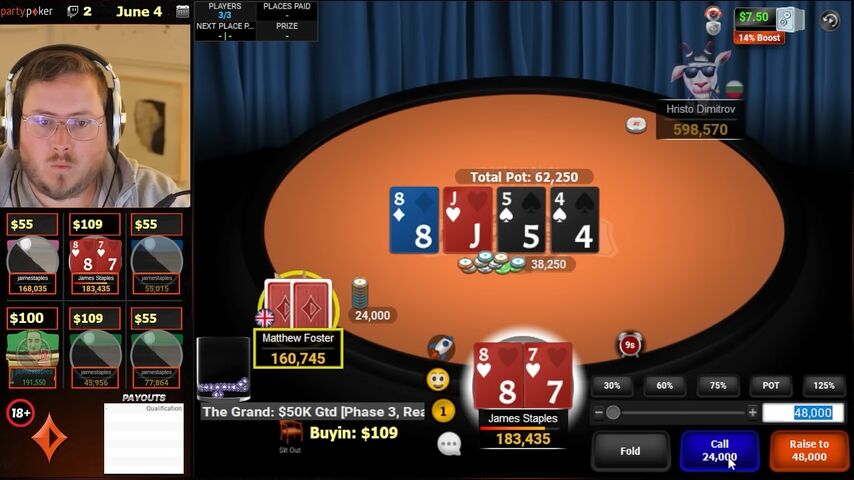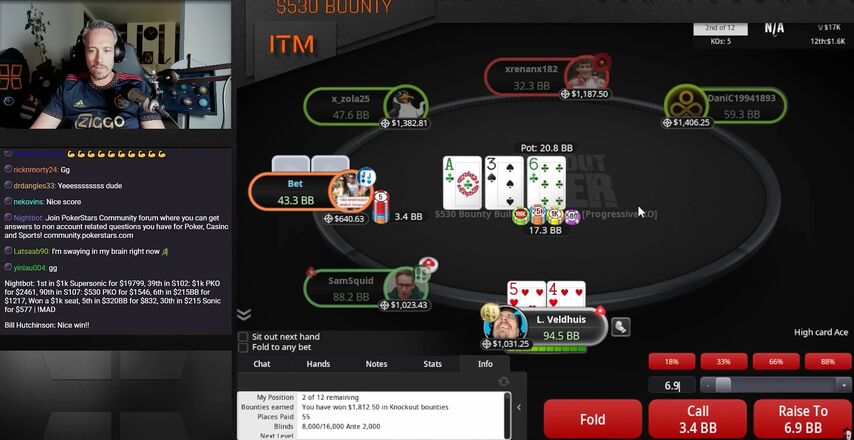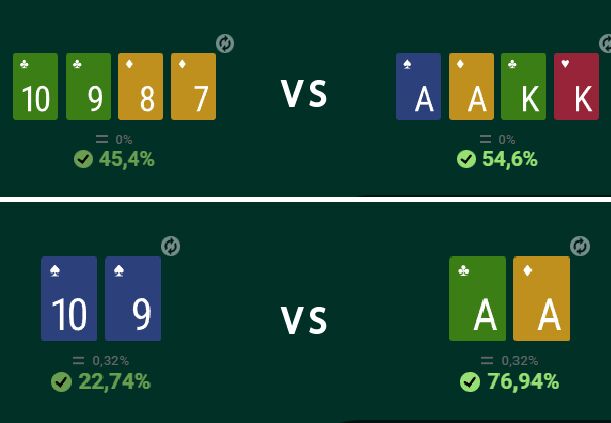If you’re wondering, “What is a connector in poker?”, you’ve found the right article.
Connector hands are connected, meaning there is no gap in the sequence. One of the cards comes before or after the other, like A-2 or 3-4.
These hands can have a lot of postflop potential since you can make straights, flushes, and other hands. Poker players don’t play low connectors like 2-3 and 3-4 very often, but hands like 8-9 and J-10 are beloved, especially when they are suited.
Suited connectors in poker (meaning both cards have the same suit) are much more valuable than un-suited connectors. We’ll talk more about why, soon.

We’re going to talk about basic strategy, but first, a little more detail about suited and unsuited connectors.
Suited and Unsuited Connectors in Poker
Hands like 4♥ 5♥, 6♥ 7♥, and 8♥ 9♥ are examples of suited connectors.
Un-suited connectors are hands without matching suits, like 4♥ 5♣, 6♥ 7♠, and 8♦ 9♣.
Why is it best to play suited connectors, rather than unsuited ones?
As you’ve probably realized, it’s much easier to make flushes when you have two cards of the same suit. That increases the postflop potential of your hand significantly. For that reason, experienced players value suited connectors much more than unsuited ones.
When you play too many unsuited connectors, you don’t give yourself the option to make flushes, meaning you’ll have less equity against your opponents.

Suited connectors can also make great 3-bet bluff candidates because of their postflop playability and the fold equity you get.
It’s tough to be completely dead (in terms of odds) when your 3-bet gets called. You’re almost certainly behind your opponent when they call your 3-bet, but your hand is very disguised. You’re also going to enjoy having some fold equity when you 3-bet bluff with suited connectors.
Broadway Connectors
Broadway in poker means 10, Jack, Queen, King, and Ace. Following that logic, broadway connectors are hands like J-10, J-Q, K-Q, and A-K.
Gapped Connectors
Sometimes your connectors aren’t quite connected. A hand like 6-8 is called a “one-gapper” because it is missing one card from the sequence. 3-6 is a “two-gapper” because there are two cards missing from the sequence.
The hand Paul Puntz has picked up in this GGPoker cash game is a one-gapped broadway connector.

Connectors in Omaha Poker
In Omaha poker, connectors have a huge amount of value. A 4-card Omaha hand with two suited connectors (like the 10♣ 9♣ 8♦ 7♦ in our example below) is known as a double-suited “rundown”.
As you can see, suited connectors have much more equity in Omaha when facing overpairs. Even in Texas Holdem, they have a surprising amount of equity against overpairs.

When you’re playing online poker, you should always value suited connectors over unsuited ones. Ungapped connectors like 10-9 can have slightly more preflop equity than one and two-gappers, so those are also more valuable to you.
By the way, we spend a lot of time reviewing the best places to play online poker. Switching over to a new site offers you two big advantages. Firstly, you’ll have more player traffic and better rewards, but you can also add cash to your bankroll when you sign up. Matched deposits and other bonuses are a good incentive to switch rooms.






Some Strategy for Playing Connectors in Poker
Suited and unsuited connectors need the right board texture to reach their full potential. That’s why they are known as “speculative” hands. They don’t have much equity before the flop is dealt, but they can suddenly have tons of equity on the flop.
Don’t over-call from out of position with suited connectors. These speculative hands play well postflop, but if you are out of position, you might not be able to play optimally. You’re often going to need to call a continuation bet from the preflop raiser, making your hand costly to draw with. It’s always better to be in position if you are calling a preflop raise to see a flop.
Your stack size is important for speculative hands. You shouldn’t invest a large portion of your stack preflop with connectors, but it’s different if you have a deep stack. See some flops and don’t shy away from multiway pots, but don’t invest too much preflop with connectors.
Your opponent’s stack size matters too. When you make a 3-bet with suited connectors (which you should be doing sometimes), you don’t want your opponent to 4-bet and move all in. With a speculative suited connector, it’s good to 3-bet, see a flop, and then make moves postflop.
What you don’t want, is a short-stacked opponent to shove their chips in preflop. You shouldn’t be calling massive preflop bets with suited connectors. Make sure you aren’t 3-betting often against short stacks if you don’t want to have a tough decision.
Experiment with these strategies in some of our freeroll tournaments if you want to practice without investment. There are still large cash prizes and tournament tickets you can win. Click the link below to find out more.
- Increased first deposit bonus
- Increased rakeback and reloads
- Help with deposits and cashouts
- Access to private freerolls
- Round-the-clock support

















